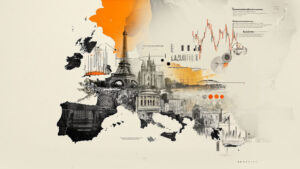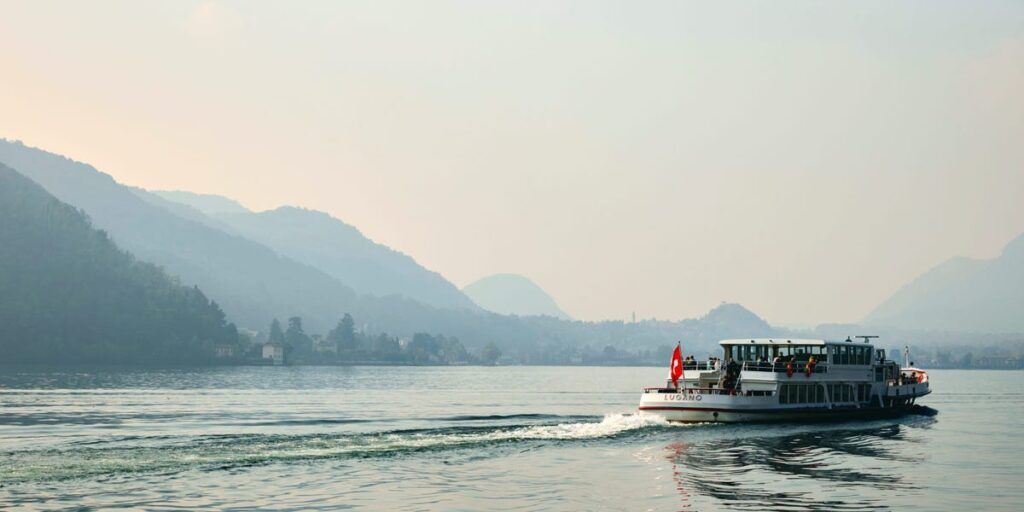Every year, around 1.4 million visitors flock to Lake Como’s decadently glamorous and increasingly crowded shores.
But just under 40 kilometers west, a tucked-away jewel nestled along Switzerland’s southernmost edge remains largely undetected.
Set under gently swaying palms and the magnificent gaze of the Alps, Lake Lugano is a glacial lake within Switzerland’s only Italian-speaking canton — a subdivision similar to a US state — of Ticino. Life unfolds quietly, with atmospheric cobbled streets and a waterfront promenade blissfully free of tourist throngs.
“Lake Lugano is perfect for travelers who want something different,” Walter Di Liberto, a Switzerland-based guide with Intrepid Travel told Business Insider. “The water is of a deep blue as it comes straight from the glaciers and the mountains surrounding. The scenery is soft and romantic. The lake is calm and the hills are green. You see flowers everywhere, and the sunsets are golden and beautiful.”
And yet, it’s still largely overlooked.
“Lugano often gets overshadowed by nearby Lake Como or Lake Maggiore,” said Jacqué Gabellone, the director of product and operations for Tenon Tours, a boutique tour company specializing in tailor-made European travel. “Many international visitors head to Como because of its celebrity status, so Lugano remains quieter and feels more authentic.”
Gabellone, who previously lived in Switzerland and frequented Lake Lugano often, told Business Insider, “Lugano is where Swiss precision meets Italian flair. You get palm-lined promenades, piazzas filled with cafés, and dramatic alpine scenery. It’s ideal for those who want both culture and nature without the heavy crowds.”
Sun-drenched culture, breathtaking scenery, and tranquil villages
Straddling the Swiss-Italian border, Lake Lugano reflects the spirit of both nations with a relaxed approach to daily life that’s effortlessly unhurried.
“It’s a place that makes you slow down and enjoy the moment. You can hear people speak Italian, eat Swiss chocolate, and see art from both cultures,” Di Liberto said.
Lugano is the largest city in the lakefront region of Lake Lugano, renowned for its waterfront position and a mild, sunny climate akin to the Mediterranean, just in an alpine province. “In Switzerland, we call Ticino, ‘Sonnenstube der Schweiz’ — Sunroom of Switzerland,” Di Liberto said.
In summer, hikers trace cliffside trails and boats skim the lake’s surface while Lugano proper hums with music festivals and open-air markets. In colder months, locals stave off winter’s chill in cozy cafés, small shops, and cooking classes.
“Most visitors come to relax, enjoy nature, and eat tasty food,” Di Liberto said. “It’s a good place for couples, families, and older travelers.”
Of course, the lake is Lugano’s main stage, around which villages like Gandria, Morcote, and Bré cling to dramatic hillsides. While quaint and picturesque, the towns see even fewer tourists.
To reach them, Gabellone said, “Travelers should take the local ferries instead of private transfers whenever possible. It’s the best way to see the villages along the lake at a relaxed pace.”
7 Things to do in Lake Lugano
- Admire art in Lugano. Lugano is home to small art museums, including the Museum of Art of Italian Switzerland.
- Ride a cable car to savor views. Monte San Salvatore is a mountain that rises high above Lake Lugano. “You can take a funicular to the top and see the whole lake,” Di Liberto said. “There are stunning views from the rooftop of the church at the summit.”
- Take a hike. Di Liberto said Monte Generoso offers various hiking trails with stunning views of the Swiss Alps and Italian plains. “The restaurant at the summit has local cuisine with breathtaking views of the Swiss Alps and Italian plains.”
- Wander through gardens. According to Di Liberto, Lake Lugano is filled with beautiful parks like Parco Ciano, which is located by the water with old trees and colorful flowers, while the summit of Monte Generoso has botanical gardens, playgrounds, and scenic walking paths. He also recommends Parco San Grato. “It’s a picturesque alpine green space with an extensive collection of azaleas, rhododendrons, and conifers to enjoy breathtaking views of Lake Lugano and the surrounding mountains.”
- Sip local wines and sample specialties. Gabellone recommends “A wine tasting of Ticino’s merlot wines with an evening stroll along the lakeside promenade,” and a meal at “Grotto Morchino for rustic Ticinese cuisine in a charming stone grotto.” Di Liberto’s favorite restaurant is Grotto dei Pescatori Caprino, which is by the lake and reachable only by boat.
- Book a historic hotel. Most of Lake Lugano is steeped in history, especially Grand Hotel Villa Castagnola. Gabellone said the hotel is a five-star resort set in a 19th-century villa with lush gardens right on the lake.
- Explore surrounding villages. Both experts agree that visitors should travel to the small villages surrounding Lugano.”Mont Bré is reachable through a spectacular funicular ride above Lake Lugano, and its charming medieval town is rich in art and architectural gems,” Di Liberto said.
Gabellone also recommends a cruise to Gandria, “a fishing village only accessible by boat or walking path.” While there, walk along Sentiero dell’olivo, or Olive Grove Trail, a scenic hiking path along Lake Lugano, connecting Gandria and Castagnola. Di Liberto said visitors can check out spectacular views of the lake and learn about olive oil production from informative signs throughout the village.
Di Liberto also suggests Morcote. “It’s quiet with old houses and a beautiful church on the hill,” he said. “Parco Scherrer is like a secret garden. Locanda Gandriese has delicious food with stunning views of Lake Lugano.”
For now, Lake Lugano remains under the radar to most travelers, even those who are well-informed. They unknowingly skip over it, seeking out better-known locales that are just as magnificent but suffer from an over-saturation of tourist activity.
“Wherever you go, just remember to slow down,” Di Liberto said. “Ticino is not about big sights, but small moments — a coffee by the lake, a walk in the hills, a chat with a local. That’s what makes it unforgettable.”
Read the full article here
















